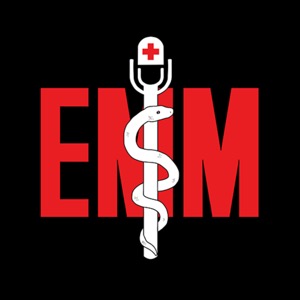Podcast 813: Pulse Oximetry
Emergency Medical Minute - Un pódcast de Emergency Medical Minute - Lunes

Contributor: Travis Barlock, MD Educational Pearls: Most oxygen in the body is bound to hemoglobin, forming oxyhemoglobin. Less than 1% of the oxygen in the body is dissolved in plasma. Pulse Oximeters (Pulse Ox) function by emitting wavelengths of light from one side, and capturing the amount absorbed on the opposite side. A calculation determined the amount of saturation. Pulse Ox relies on pulsations in arterial flow to create a photoplethysmogram (pleth) for measurements Patients with poor peripheral perfusion may have unreliable pulse ox. Patient with an LVAD have constant flow and also unreliable pulse ox. Pulse Ox is a useful tool when pacing to determine mechanical capture. If there is disparity between the electrical wave pulse and the rate on pulse ox, there is likely no mechanical capture leading to poor distal flow. References Eecen CMW, Kooter AJJ. Pulsoximeters: werking, valkuilen en praktische tips [Pulse oximetry: principles, limitations and practical applications]. Ned Tijdschr Geneeskd. 2021;165:D5891. Published 2021 May 11. Elgendi M. On the analysis of fingertip photoplethysmogram signals. Curr Cardiol Rev. 2012;8(1):14-25. doi:10.2174/157340312801215782 Summarized by Kirsten Hughes, MS4 | Edited by John Spartz MD & Erik Verzemnieks, MD The Emergency Medical Minute is excited to announce that we are now offering AMA PRA Category 1 credits™ via online course modules. To access these and for more information, visit our website at https://emergencymedicalminute.org/cme-courses/ and create an account. Donate to EMM today!
